Nicole
Cherry - Table of Contents .........................
Public Art - Table of Contents
"Día
de los Muertos" / "Day of the Dead" Murals
Undergrounds Coffee house and Roastery
80 South Park Avenue, Buffalo NY
By Nicole
Cherry
Photos taken October 2019
|
Día de los Muertos, or Day of the Dead, is not a Mexican version of Halloween. Though related, the two annual events differ greatly in traditions and tone. Whereas Halloween is a dark night of terror and mischief, Day of the Dead festivities unfold over two days in an explosion of color and life-affirming joy. Sure, the theme is death, but the point is to demonstrate love and respect for deceased family members. In towns and cities throughout Mexico, revelers don funky makeup and costumes, hold parades and parties, sing and dance, and make offerings to lost loved ones. Día de los Muertos, or Day of the Dead, is a celebration of life and death. While the holiday originated in Mexico, it is celebrated all over Latin America with colorful calaveras (skulls) and calacas (skeletons). Day of the Dead originated several thousand years ago with the Aztec, Toltec, and other Nahua people, who considered mourning the dead disrespectful. For these pre-Hispanic cultures, death was a natural phase in life’s long continuum. The dead were still members of the community, kept alive in memory and spirit—and during Día de los Muertos, they temporarily returned to Earth. Today’s Día de los Muertos celebration is a mash-up of pre-Hispanic religious rites and Christian feasts. It takes place on November 1 and 2—All Saints’ Day and All Souls’ Day on the Catholic calendar—around the time of the fall maize harvest. The centerpiece of the celebration is an altar, or ofrenda, built in private homes and cemeteries. These aren't altars for worshipping; rather, they’re meant to welcome spirits back to the realm of the living. As such, they're loaded with offerings—water to quench thirst after the long journey, food, family photos, and a candle for each dead relative. If one of the spirits is a child, you might find small toys on the altar. Marigolds are the main flowers used to decorate the altar. Scattered from altar to gravesite, marigold petals guide wandering souls back to their place of rest. The smoke from copal incense, made from tree resin, transmits praise and prayers and purifies the area around the altar. In 1947 artist Diego Rivera featured Posada’s stylized skeleton in his masterpiece mural “Dream of a Sunday Afternoon in Alameda Park.” Posada’s skeletal bust was dressed in a large feminine hat, and Rivera made his female and named her Catrina, slang for “the rich.” Today, the calavera Catrina, or elegant skull, is the Day of the Dead’s most ubiquitous symbol. Day of the Dead is an extremely social holiday that spills into streets and public squares at all hours of the day and night. Dressing up as skeletons is part of the fun. People of all ages have their faces artfully painted to resemble skulls, and, mimicking the calavera Catrina, they don suits and fancy dresses. Many revelers wear shells or other noisemakers to amp up the excitement—and also possibly to rouse the dead and keep them close during the fun. |
 Undergrounds Coffee house and Roastery, South Park at Hamburg St.   The mural on the side of the house across the street from Undergrounds is also by Nicole Cherry |
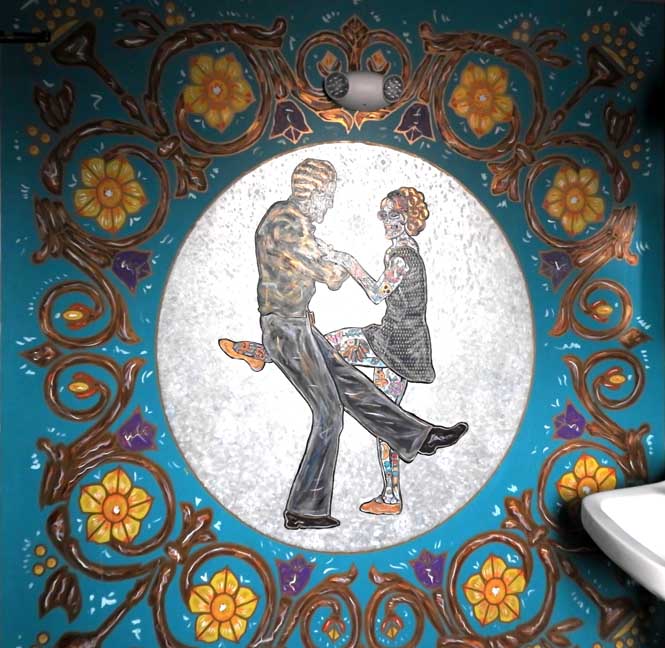 Details below: 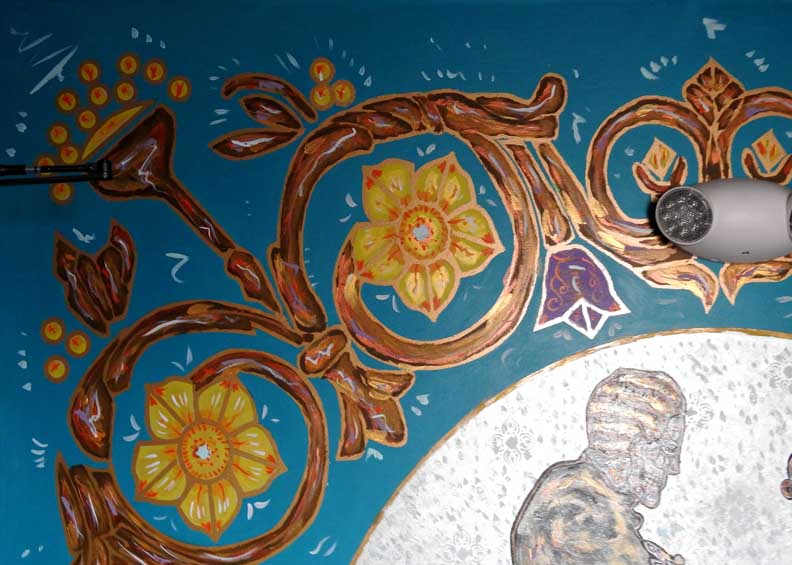  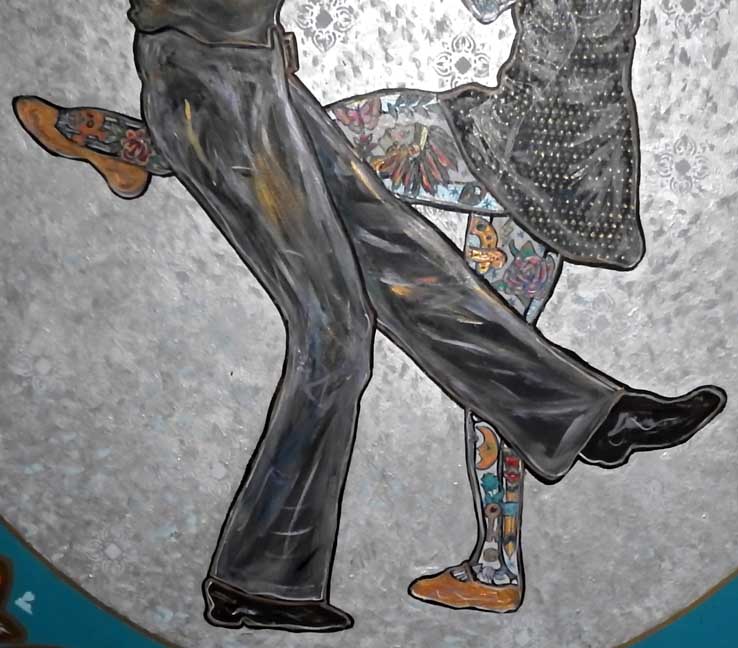  |
 Details below:  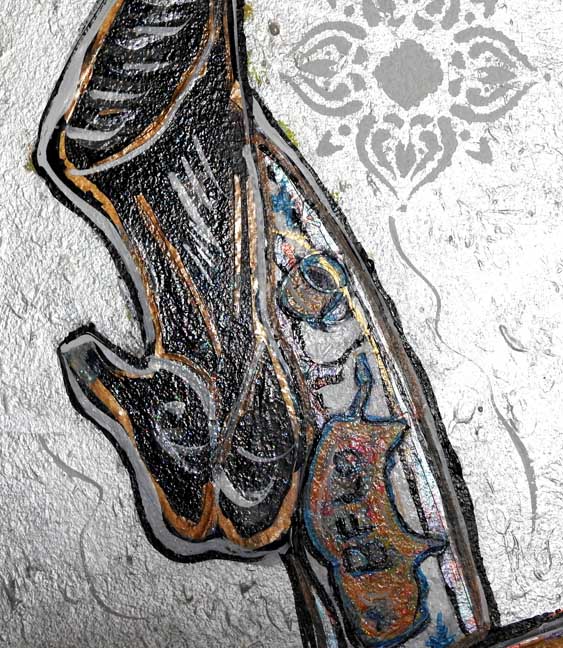 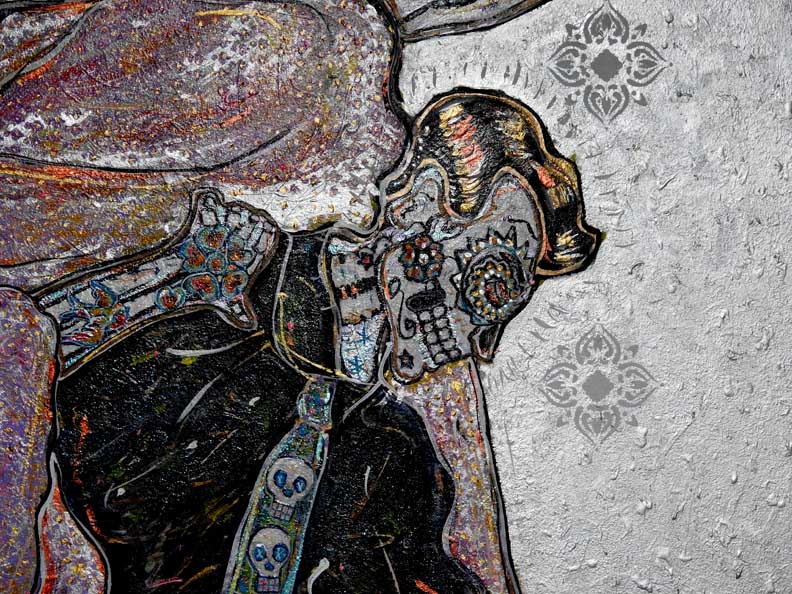 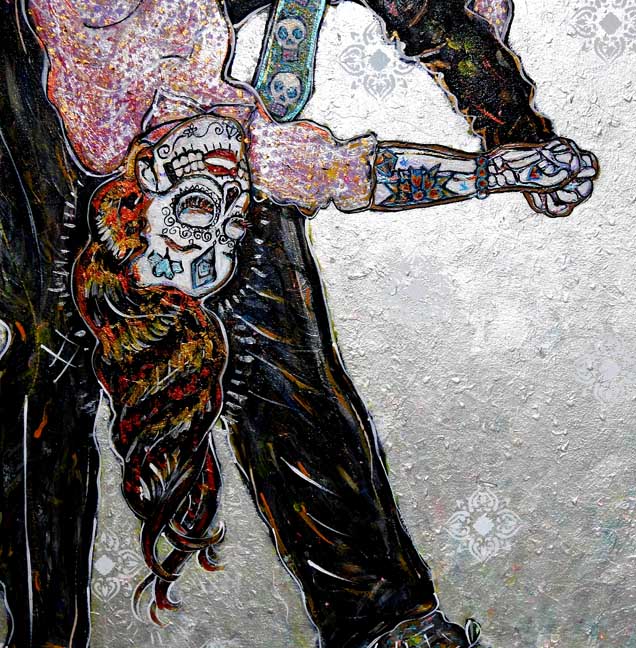 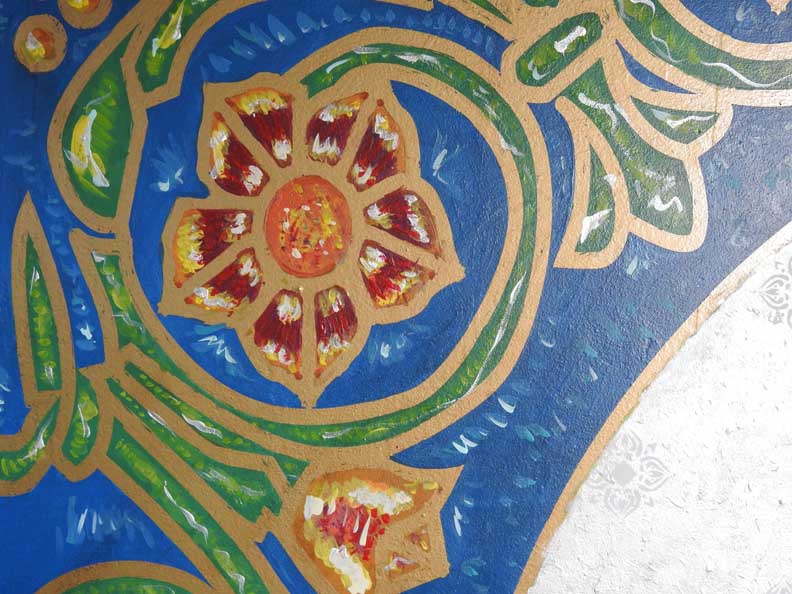  |
 Details below: 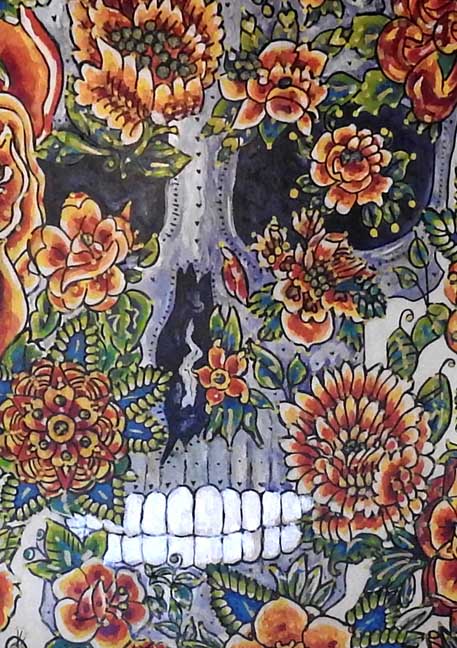 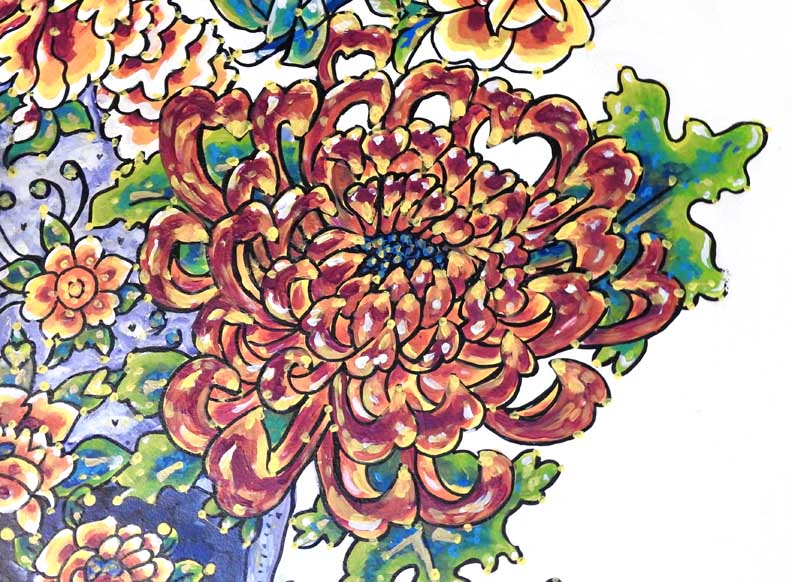  |

web site consulting by ingenious, inc.